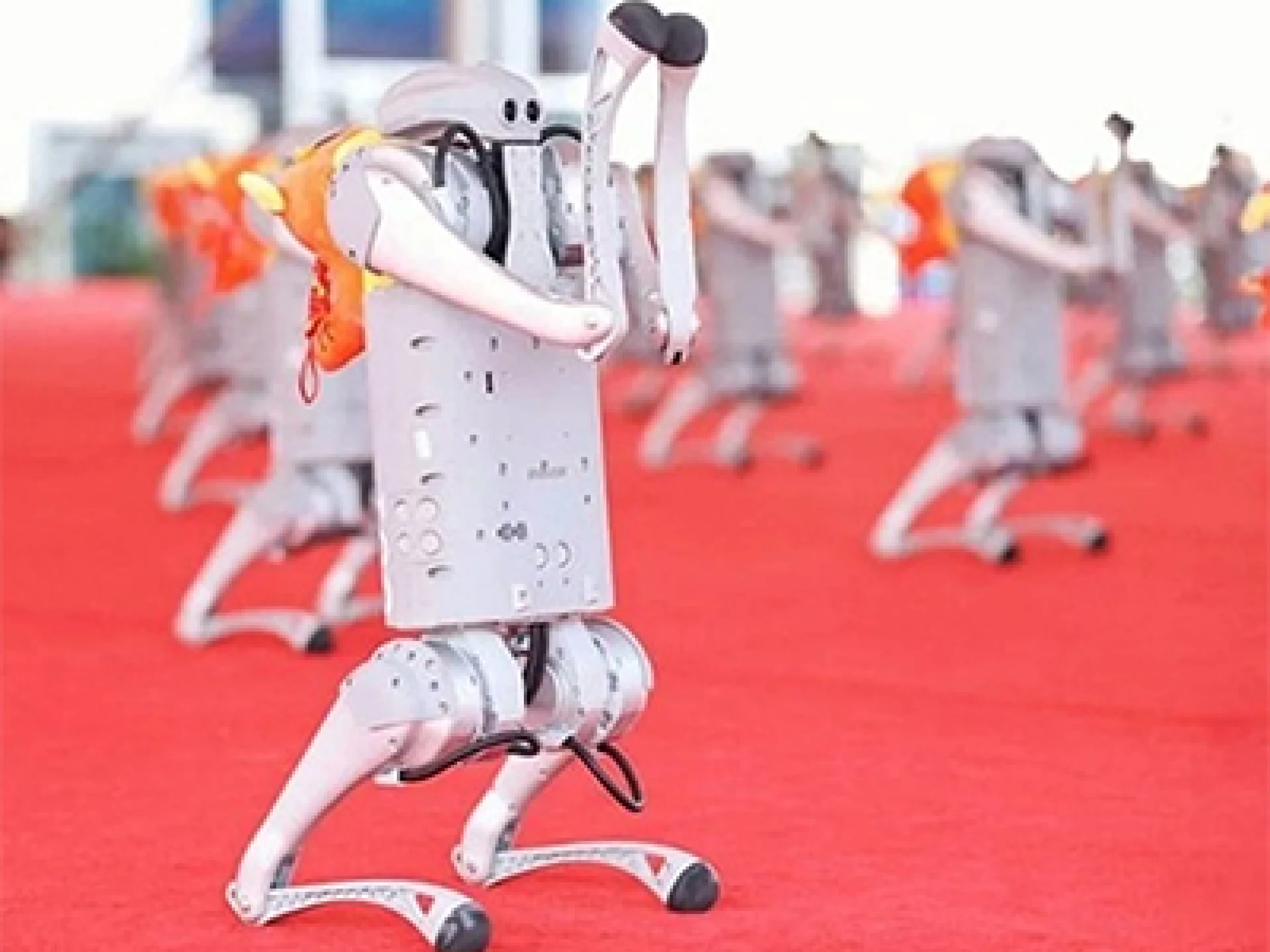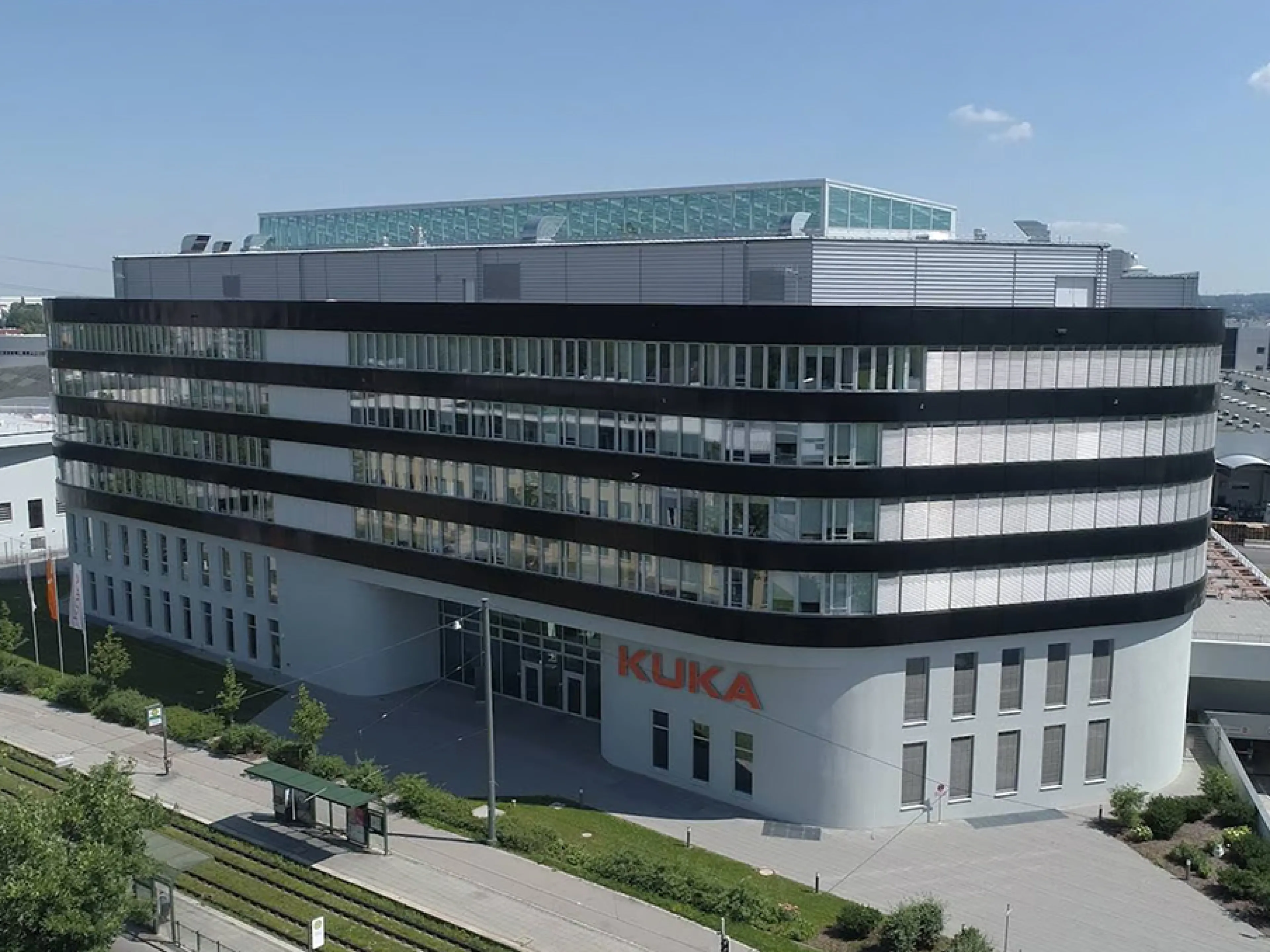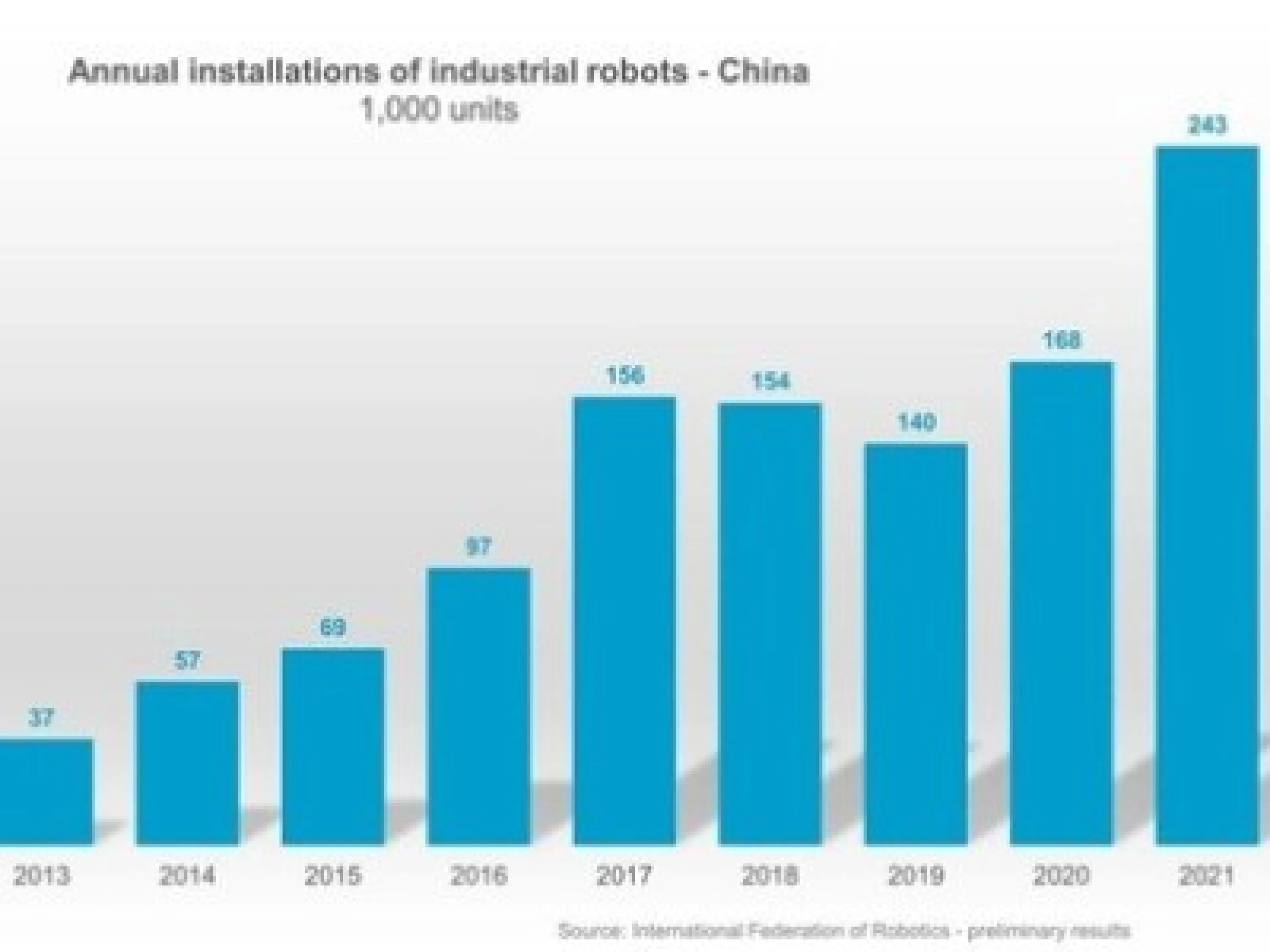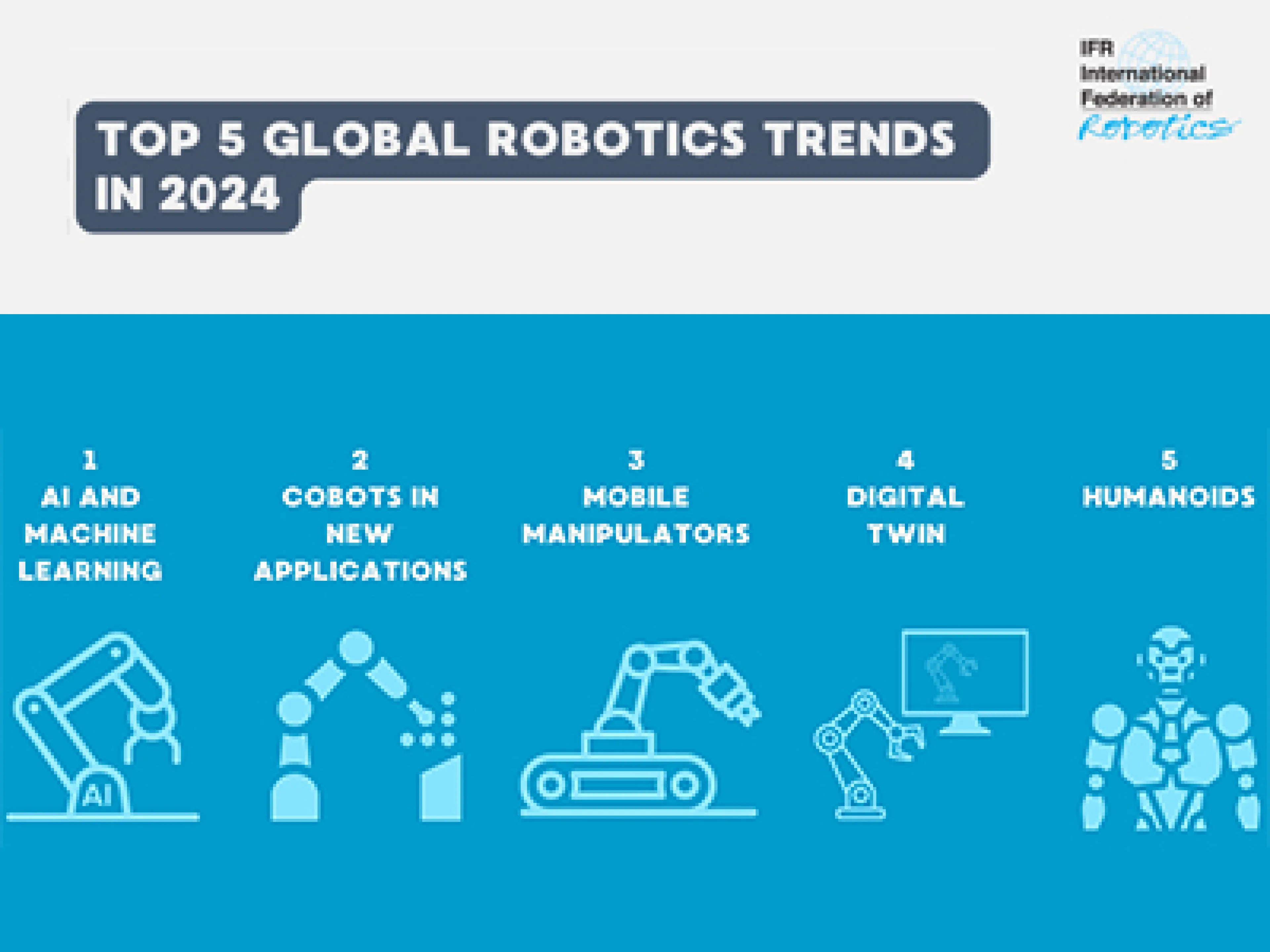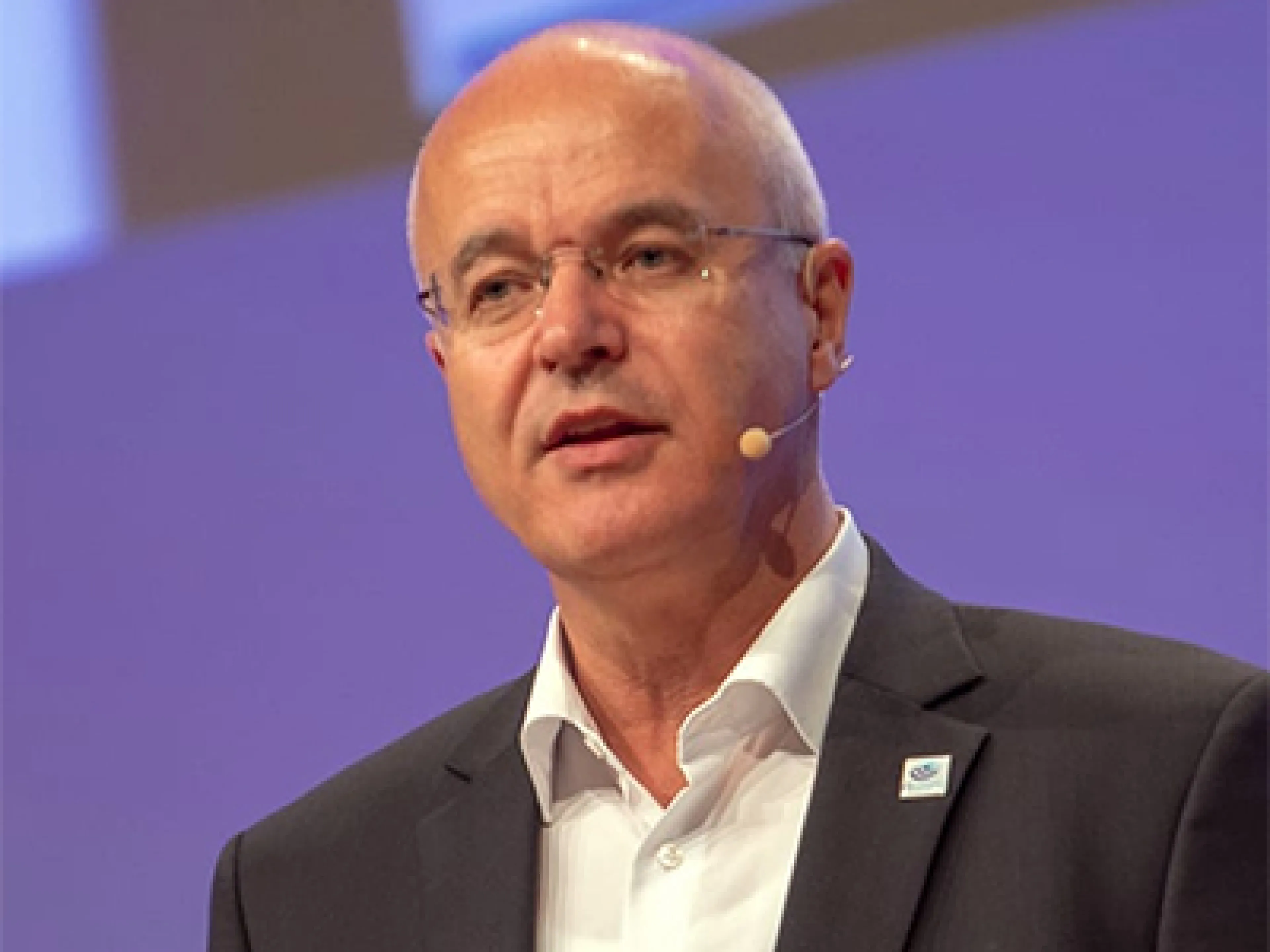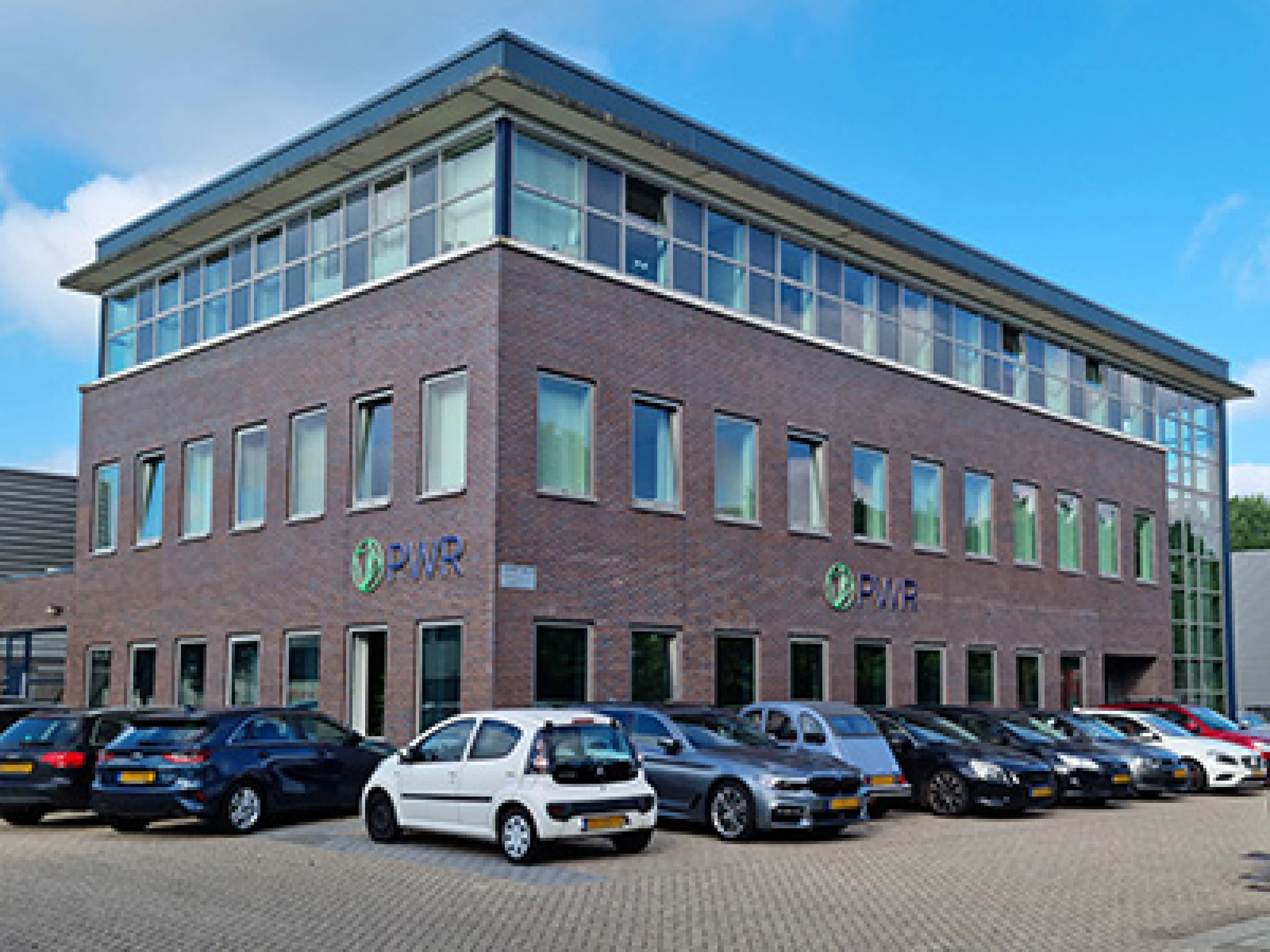
There is a strong increase in demand for industrial robots in Europe: the 27 member states of the European Union installed around 72,000 units in 2022, an increase of six percent compared to the previous year. These are preliminary figures published by the International Federation of Robotics (IFR). “The top five adopting countries within the EU are Germany, Italy, France, Spain and Poland,” says Marina Bill, President of the International Federation of Robotics (IFR). “They account for about 70% of all industrial robots installed within the EU in 2022.”
Germany is by far the largest robot market in Europe, with around 26,000 units installed in 2022, an increase of three percent on the previous year. This corresponded to a 37 percent share of the EU total. Globally, the country recorded the fourth highest robot density after Japan, Singapore and the Republic of Korea. The automotive industry has traditionally been the main buyer of industrial robots in Germany. 27 percent of new units installed in 2022 were in this sector. This corresponds to 7,100 units and is 22 percent less than in the previous year. This reflects a well-known cyclical investment pattern in this segment. In general industry, the main customer was the metals sector, which installed a total of 4,200 units in 2022, a fifth more than the previous year. This is up from pre-pandemic levels of around 3,500 units per year, with a peak of 3,700 units in 2019. Installations in the plastics and chemical industries returned to pre-pandemic levels with a seven percent increase to 2,200 units in 2022.
Metal and machinery industry determine robotics demand in Italy
Italy is the second largest robotics market in Europe after Germany. In 2022, an all-time high of almost 12,000 units were installed, ten percent more than in the previous year. This represented 16 percent of total installations in the EU. The country has a strong metal and machinery industry, with sales reaching 3,700 units in 2022, up 18 percent year-on-year. Sales of robots in the plastics and chemical industries increased by 42 percent, with 1,400 units installed. In addition, Italy has a significant food and beverage industry. Installations increased nine percent to 1,400 units in 2022. Demand from the automotive industry decreased 22 percent to 900 units. This segment is dominated by the Stellantis Group, which resulted from the merger of FIAT-Chrysler and PSA (France).
French 100-billion-euro stimulus package boosts demand for robots
The robotics market in France ranked third in Europe in 2022. Annual installations increased by 15 percent to 7,400 units. This is less than a third of the number in neighboring Germany. The main customer is the metal industry, with a market share of 22 percent. In this segment, 1,600 robots were installed, an increase of 23 percent. The automotive industry increased by 19 percent, reaching 1,600 units. This corresponds to a market share of 21 percent. The French government's €100 billion stimulus package for investment in smart factories, which came into force in mid-2021, is expected to drive demand for industrial robots in the coming years.
Automotive industry is strongest robot installer in Spain
Annual installations in Spain increased by twelve percent to a total of 3,800 units. Robot installations have traditionally been driven by the automotive industry. According to the International Organization of Motor Vehicle Manufacturers (OICA), Spain is the second largest automotive producer in Europe after Germany. The Spanish automotive industry installed 900 units - an increase of five percent. Sales in the metal industry increased by 20 percent, reaching 900 units. The automotive and metal industries accounted for nearly 50 percent of robot installations in Spain in 2022.
Renewed growth of robots in Poland
Robot installations in Poland have been rising sharply for the past nine years. Annual statistics show a total of 3,100 units in 2022, the second-best result after the new high of 3,500 units in 2021. Demand from the metal and machinery industry rose 17 percent to 600 units in 2022. The automotive industry recorded cyclical demand with 500 units installed, a 37 percent drop. The war in neighboring Ukraine dampened the manufacturing sector. However, investments in digitization and automation technologies will be supported by the EU with a total of 160 billion euros between 2021 and 2027.
Robot installations in Europe, including non-EU member states, totaled 84,000 units in 2022, an increase of three percent over the previous year. The North American robotics market also saw strong growth in 2022.
